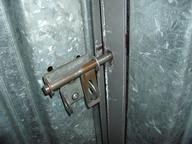Quiz Answer Key and Fun Facts
1. During which king's reign was the Great (White) Tower, the original stone fortress of the Tower of London, built?
2. In 1100 one of the first state prisoners to be housed in the Tower of London was Rannulf Flambard, Bishop of Durham. Which of the following is true about the Bishop?
3. The Great Tower is also called the White Tower, because it was whitewashed in what year?
4. By what name was the rack, the most widely used instrument of torture in the Tower's dungeons, commonly known as?
5. What was the Little Ease?
6. Three of the people listed below were state prisoners in the Tower of London during the reign of Henry VIII and were subsequently beheaded. Which one of the following did not suffer that fate?
7. Which one of these events in the history of the Tower of London did not happen during the reign of King Charles II?
8. Lord Lovat, the Scottish Lord captured at Culloden, was housed in the Tower until his execution. How old was Lord Lovat when he was beheaded?
9. In what year did a fierce fire burn down Bowyer Tower, the Brick Tower, the armories, the storehouse, and badly damage other structures of the Tower of London?
10. Who was the last prisoner-of-war housed in the Tower of London?
Source: Author
LindaC007
This quiz was reviewed by FunTrivia editor
bloomsby before going online.
Any errors found in FunTrivia content are routinely corrected through our feedback system.

